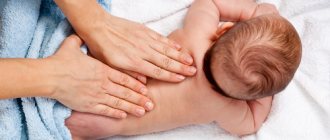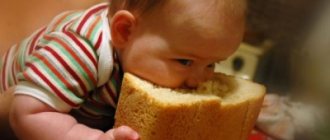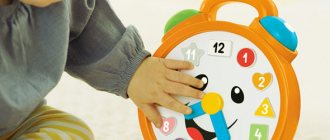Useful tips
Turn every lesson into an interesting game.
Turn on the music, go and read poetry. The baby should be interested. Take your time, increase the load and duration of sessions gradually - from 5 to 15 minutes (for advanced mothers). Do not try to teach your child to roll over, crawl, or sit if he himself, in a calm state, does not demonstrate readiness to perform such movements. What is good for a six-month-old baby can harm a baby at 4 months.
Make sure that the conditions in the room where the lesson is taking place are optimal - the air temperature should not be higher than 21 degrees Celsius, and the air humidity should be 50-70%.
If the child begins to be capricious, do not try to continue massage and gymnastics at any cost. Stop the lesson and return to it when the baby is in a good mood.
It is better to do a soothing massage in the evening before swimming, an hour before going to bed. Carry out strengthening manipulations in the first half of the day to avoid problems with appetite and falling asleep.
Fourth complex (age 6-10 months).
- Crossing the arms on the chest with support from the rings.
- Alternate and joint flexion of the legs and their extension (so-called “sliding steps”).
- Turn to the right from the back onto the tummy without support from the handle.
- Massage of the tummy, back.
- Crawl.
- Sitting the baby down with support by holding the arms out to the sides.
- Passive raising of straight legs.
- Circular movements with the handles.
- Active exercise – tense arching.
- Turn left from back to tummy.
- Active exercise – raising the body (position on the stomach), supporting the child by straightened arms.
- Sitting down with support by the handles, which are spread shoulder-width apart (active exercise).
All exercises in this complex are performed in a horizontal starting position, with the exception of the “boxing” exercise (at 8 months of age, when the child sits confidently without support, it can be performed in the starting position while sitting).
Exercises for babies at 4 months
Exercises for children at 4 months take into account the fact that the unconditioned reflexes of a newborn gradually disappear. All his movements become conscious, which means that all the fun begins for mother and baby.
Let's talk about how to choose the right exercises for 4-month-old children and how to make this ritual as useful and enjoyable as possible.
Recommended gymnastic exercises for children aged 4 months
Gymnastics for a child at this age takes 25-30 minutes a day. Increase the load and duration of training gradually, without tiring the child too much. Don't be fooled by the apparent simplicity of the exercises - for children at 4 months of age, any movement is a load that trains and strengthens the muscles.
Raising the head and torso
Place your child on his back and, holding his wrists with your hands, place your thumbs in his hands. Pull your baby gently, encouraging him to continue moving and make an effort to lift his head and torso. This exercise is already familiar to you - it was found in the gymnastics recommendations for a 3-month-old child.
Boxer exercise
Using the previous starting position and still fixing the child’s wrists, alternately bend and straighten your arms. If the baby’s right arm is extended, then the left arm is bent – and vice versa. Make sure that the extension of the arm stimulates the lifting of the shoulder. And remember - movements should not be sudden, this is dangerous.
Exercises on a gymnastic ball
So far, all exercises on a fitball come down to a simple, well-fixed swing on a “saddled” ball, but it should be noted that children do not always like this exercise. In order not to form a negative attitude towards the gymnastic apparatus, make sure that the ball is warm and bright - children like rich colors.
Exercise "turn on your stomach"
This exercise is new in the set of exercises for a 4-month-old baby. Having laid the baby on his back, secure the baby's shins and wrist well, allowing him to squeeze your finger. Gently rotate your baby's pelvis, encouraging him to turn his head, shoulders and chest. To complete the rollover, extend your child's arm so that it does not get caught under the belly.
Crossing arms over chest
Lying on your back and fixing your wrists as usual, smoothly spread them to the sides and cross your arms on the baby’s chest. Be sure to alternate the position of your hands (up/down) and gently shake the child’s hands in order to avoid overstraining unusually working muscles.
Sliding steps
This exercise is recommended for everyone who has already overcome neonatal hypertonicity. Having laid the child on his back on a table or other hard surface, securely fix the shins with your hands and, periodically shaking the legs, straighten them and bend them so that the heel slides smoothly along the surface.
In addition to all the above exercises, you can and should not forget the already familiar ones: reflex flexion of the spine, flexion/extension of the feet, reflex walking and others. Also, continue to practice massage treatments.
Massage exercises for children at 4 months
Massage is also gymnastics. Essentially, these are passive exercises that also effectively train the baby's muscles. It's time to offer a 4-month-old baby something new - it's time to expand the massage technique.
- Vibration or shaking is currently the main method of passive gymnastics.
- Rubbing with the pads of bent fingers should always be followed by soothing stroking of the skin.
- Massage with third-party objects is practiced - if you have not yet “introduced” your baby to a fitball, now is the time.
The following exercises become the main massage procedures at this age.
- Ring rubbing of the legs up to the knee (strictly excluding the child’s knee itself).
- Rubbing the muscles of the child's thighs.
- Massage the feet in the direction from the heel to the toes.
- Gently circular rubbing of hands from palms to elbows.
- Circular stroking of the baby's tummy.
- Back massage - so far only gentle stroking and direct rubbing are practiced.
- Breast massage - stroking the intercostal space with spread fingers.
Make sure your child likes everything that happens. Otherwise, you will need to consult a pediatrician.
Daily regime
The first months of his life, the child spent most of the day sleeping, breaking out of the sweet embrace of Morpheus in order to refresh himself and free himself from the processed products of previously received food. Now, the situation is different - he requires games, more attention to himself and familiarity with the environment.
For these purposes, his biological clock allocates a certain period of time for wakefulness, which, in fact, parents should direct to the harmonious development of their growing 3-month-old baby.
His daily routine becomes more organized, coherent and clear. It becomes easier for mom to plan her own schedule, choose the optimal time for a walk in the fresh air, as well as for performing household chores.
Babies at this age, as a rule, wake up at the same time, then have breakfast, are active, after which they become tired and ready to fall asleep. Then again, cheerfulness, afternoon snack and sleep, and so on until the evening.
As for the night, 3-month-old babies are able to sleep soundly for up to 6 hours in a row, then they wake up, require milk/formula and again succumb to the usual biological rhythm.
True, not every parent can boast that his 3-month-old baby allows him to sleep well at night, because the fight against hated colic has not been canceled, just like his desire to be close to his mother, despite her fatigue.
The best way to calm a baby who is noisy in the silence of the night is to put him to the breast, which can be repeated 2 to 4 times a night. When the frequency of “snacks” becomes unbearable for an exhausted mother, co-sleeping with the child is practiced.
Opponents of this method claim inevitable problems in the future, although the problems of the present are sometimes more significant. In this regard, there is an opinion that a well-rested and cheerful mother who slept next to her baby is better than an angry and tired mother who rushed half the night from the crib to her own bed.
In addition to sleeping together, experts recommend involving dad in the “night carousels”, who can successfully replace mom and calm down his daughter or son with banal motion sickness.
Observations show that the mere smell of breast milk that babies smell provokes their appetite, so it is quite possible that dad will be able to put his child to bed much sooner than his beloved mother will.
Massage techniques
Fun gymnastics for infants can be carried out from the first days of life. There are no age restrictions. But parents should understand well that physical activity should be proportionate to age; the baby cannot be overloaded. Conduct classes daily, you can do gymnastics 2 or 3 times a day, but the duration of each lesson should not exceed 5-10 minutes.
A few simple rules will help you organize activities with your baby correctly.
- Try to do your classes at the same time. It is optimal to do this in the morning and after a midday nap, but in the evening, when you give your baby a light and relaxing massage before bathing and going to bed, it is better to avoid gymnastic exercises so as not to stimulate the nervous system. Overstimulation will prevent your child from falling asleep quickly and soundly.
- Before gymnastics, always do a light general or therapeutic massage prescribed by your doctor for a specific disease.
- The room in which the lesson is held must be ventilated and should not be too cold or too hot. It is best to keep the temperature at 21 degrees Celsius. If it’s summer outside and you have the opportunity, do gymnastics outside.
- Do not load your baby immediately after eating; it is also undesirable to start exercising on an empty stomach. The best time for charging is the interval between feedings (one and a half hours after meals).
- Do not exercise on a soft bed. The baby's spine will not be in the correct position on it. For newborns and infants up to six months, use a changing table and do the exercises on a regular table.
Gymnastics for newborns - video tutorial
The simplest exercises can be performed with the baby from birth: lifting and unbending his legs and arms when he is lying on the table. More complex exercises begin to be performed after a month: tapping the leg on the table, lifting by the handles. There is dynamic gymnastics, which begins to be performed after the child begins to hold his head well. The main goal is to do no harm. The set of classes must be daily and performed in full.
The duration of classes depends on the child’s reaction. At the age of up to 1 month, the lesson should last 5-10 minutes, later – individually. There is no need to overpower the child’s active protest or resistance when increasing loads and complicating movements.
Before classes, the room must be ventilated, the air temperature in it should be 18-22º C. The child should be without clothes so that he can simultaneously take air baths. You can play some quiet, pleasant music without words in the background to help your child relax. Mom should not be wearing jewelry and her hair should be tied up.
How to do exercises correctly
Most gymnastics exercises for babies 1 month and older are developed by specialists taking into account many significant factors, so to observe positive dynamics it is important to do everything correctly
Exercise "Frog"
To perform this exercise correctly, the infant is placed on his back by the parent. Next, the adult takes him by the legs in the shin area (the palms should cover the baby’s knees) and makes several flexion movements. Then the legs are spread with the knees outward to the sides, as a frog does. You can also place the child on his stomach, take him by the feet and apply gentle pressure, spreading his legs to a similar position. The exercise can be performed during gymnastics for a month-old baby.
Exercise "Embryo"
The correct way to perform the “Embryo” exercise for babies is as follows. The child's arms are connected on the chest and the bent legs are pulled towards the tummy. At the same time, the feet are connected, the knees are spread apart, the head is tilted to the chest
It is important to slightly hold the head with one hand and the child’s limbs with the other. In the resulting position, reminiscent of the fetal position, the baby is rocked in different directions
This exercise is perfect for gymnastics for 1 month old babies.
Other exercises
There are also simple exercises that parents can do with their babies almost from infancy, for example, “Guard”. As part of its implementation, the child is placed on his tummy and, standing from behind, is taken by his shoulders. It is necessary to support the baby in such a way that he can stay on his elbows for several seconds. After this, the baby’s shoulders need to be spread to the sides. The baby will begin to try to lift his head up. Performing such exercises for infants will prepare the baby’s neck muscles to independently hold the head.
The “Bicycle” exercise, known to many mothers, delights most babies. It is performed in a lying position. You need to take the child by the legs and move them one by one towards the tummy.
Fitball exercises
Gymnastics for kids should include exercises on a fitball. You can use it to rock your baby on his tummy or bounce his back and perform other simple exercises. The most important thing is to cover the fitball with a soft-touch fabric before starting exercises for babies so that the baby feels as comfortable as possible.
Fitball is very useful for kids
Gymnastics and joint developmental activities
The development program for a 3-month-old child should include recreational gymnastics and joint activities and games. With their help, the baby learns about the world, gains vital knowledge and skills, trains thought processes and receives the necessary emotional and physical stress.
Let's start with games
You can entertain your child and stimulate his visual, auditory, tactile and motor activity with the help of:
- Observations of pets;
- Listening to nursery rhymes, music and fairy tales;
- Interactions with toys of different sizes and textures, suspended on a string or given directly into the hands;
- Studying complex toys with moving elements;
- “Live” communication with mom, making funny faces and making interesting sounds.
There are many other ideas you can add to this list. It is enough to use your imagination and turn your plans into reality. A three-month-old toddler absorbs any given information like a sponge, which is a sin not to take advantage of.
Now about gymnastics
A child needs vigorous physical activity no less than good nutrition. Therefore, prepare a safe place for exercise (use mats and blankets) and get down to business:
- Practice turning over and rolling from your back to your side, then onto your tummy and back;
- Gently pull the baby towards you by the arms, returning him to his original position;
- Develop hand motor skills;
- Place the baby on his tummy;
- While lying on your stomach, provide support for your legs so that the baby tries to push off from it (this is how mastering the science of crawling begins);
- Provoke the baby to achieve the intended goal (to do this, place at a distance of 30-50 cm from him a variety of alluring toys that need to be reached);
- Perform “floating exercises”, only carefully (those that cause concern among the older generation, but at the same time train the child’s vestibular apparatus);
- Get the blood flowing throughout your body.
Massage, gymnastics for a 10 month old baby
At 10 months, the baby is actively preparing to go on his own. He already stands well with support, can sit for a long time without support and at the same time make turns of the body, play with both hands, the child generally crawls at the “speed of sound.” The baby can even walk either on his own along the support or with the support of the parent’s hands. Teach your baby to climb onto a sofa or chair on his own, and also to get off of them correctly, butt first, so as not to fall and break his nose. Show your child a variety of movements that he can already perform. For example, you can build an obstacle course at home that you have to climb or walk through. Teach him to step over something, climb 1-2 steps (until the baby can handle more), crawl through a tunnel (a special one for children or one built from chairs), a ring. A great fun activity for a child at this age is dancing. Children at 10 months usually have excellent hearing and are always in a good mood. Choose tunes that he likes, it can be light modern music, children's songs or classical melodies, for example, Strauss waltzes or works by Mozart, Chopin. All the children dance differently, some sway from side to side, others nod to the beat of the music, others perform springy squats, etc. Dance with your baby, if he already walks with support from one arm, teach him to make turns, you can add hand movements: claps or palms, flashlights.
Massage, gymnastics for a 10 month old baby – Set of exercises
1. We start gymnastics by crossing our arms according to the previously known pattern. Then you can immediately perform the “boxing” exercise by placing rings in the child’s hands. The exercises can now be performed not only lying and sitting, but also standing. Now lightly massage your baby's hands.
2. Sliding steps, cycling and foot massage. Remember that we start and end any massage with stroking, we perform it from the bottom up, i.e. from foot to thigh.
3. Turns from back to stomach through left and right sides. Now massage your back and buttocks.
4. Leg raises. Make sure your child's legs are straight at the knees. The child can already perform this exercise on his own; it is good for strengthening the abdominal muscles.
5. Squats from a lying position.
6. “Sit down and stand up.” Do squats, while the baby leans on your hands. When the baby masters this exercise well, you can put rings or toys with a round handle in his hands. This complicates the exercise, because now the baby needs to hold the support tightly; when he holds on to your hands, you fix him.
7. Also try to do 1-3 exercises with sitting down and standing up with support from only one hand.
8. Bend forward. Place the child with his back to you and fix his legs and pelvis, ask him to lean forward and pick up the toy from the floor. Perform the exercise 2-4 times.
9. Crawling. Remember that crawling is not just a way for a child to move, but an excellent exercise for strengthening all muscle groups. If the baby is already insistently demanding your hands to take a vertical position, attract him with a game. Make an obstacle course that needs to be overcome, crawl along with the baby in a race, by the way, this is a great exercise for mom too.
10. Walking. All kids now love to walk by the hand, because this way they can explore the world. Complicate the movements, help your baby learn to squat, step, and turn from a standing position. Encourage your baby to walk with support from one hand, not two. In this case, the baby will need to learn to maintain balance.
11. Bridge from a supine position. Hovering from a prone position.
12. Wheelbarrow. This is walking on your hands. The baby lies on his stomach, you raise his legs low, and the baby stands up in his arms and performs moving movements with them at your request. You can encourage your baby to walk with a toy lying at a distance in front of him. Perform the exercise 2-3 times. Although it is difficult, it is very useful, as it develops all muscle groups well.
All about the development of a 3 month old baby
Your beloved little one has grown noticeably at just three months old. The things he bought for the first time are too small for him, he no longer looks like a tiny lump in the crib, we have to choose larger diapers for him, and visually he has become much more mature than, say, three or four weeks ago.
The average indicators of child development at three months are as follows:
| Weight | Boys – up to 8 kg; Girls – up to 7.5 kg. |
| Height | Boys - 65.5 cm; Girls – 64 cm. |
| Head circumference | Boys – up to 42.9 cm; Girls – 42 cm. |
| Duration of sleep and rest | Night sleep lasts approximately 10 hours with breaks for feeding every 3-3.5 hours, and daytime sleep, in the amount of two to four, takes from 30 minutes to 2 hours each. |
| Feeding frequency | At least 6 times a day. The number of feedings on demand can reach 10-12 times during the day and 2-4 at night. |
| Daily nutritional intake | Equals 1/6 of the child’s body weight. Therefore, it is approximately 682 to 960 ml. |
| Visual abilities | The range of vision is more than 40 cm. The baby can see objects as small as 2 mm. up to 60 cm. |
Abilities and skills
The three-month-old baby is unusually sweet and funny. He doesn’t just lie in his crib, moving chaotically and looking into nowhere, but tries to the best of his ability to contact the world and people around him.
He knows how to express joy, sometimes, quite violently, he smiles at mom and dad every time one of them approaches the crib. Such phenomena are not only unusually pleasing to the eye, but also very indicative from the point of view of compliance with the norms of psychophysical development of a little man.
A 3-month-old baby eagerly goes into the arms of his family. To do this, his body has acquired the necessary “rigidity”, his muscles have gained strength, and his head practically does not need support. Now he sees much more than he could see before, especially, his attention is drawn to bright objects, lighting fixtures, paintings and other items of home decoration.
Thanks to the intensive development of a 3-month-old baby, he becomes more inventive and active. Lying in a crib or playpen, he simply never gets bored, because when lying on his back, he has handles at his disposal that he can look at for a long time and with which he can cheerfully wave and reach for hanging rattles.
For most toddlers, legs also become the object of increased attention, and it’s not surprising to see a picture where a baby, like a real gymnast, deftly puts them in his mouth.
In addition, at three months the child:
- Not without help, but takes a position lying on his tummy, briefly lifting his shoulders and chest from the hard surface, resting on his arms and holding his head at an angle of 90 degrees;
- Squeals with delight;
- It rests well on the feet, imitates a step if placed on its legs;
- Able to hold small toys in his tiny hands;
- Tries to reach an object that has aroused his interest;
- He is keenly interested in sounds and his own vocal capabilities.
Many parents may notice that when 3-month-old babies hear the sound of a bell, doorbell or telephone, a silent question freezes on their faces: “What is this?”, “Where is the noise coming from?” They try to find its source by turning the head and listening.
Music also has a visible effect on the child. Scientific observations show that quiet and calm melodies calm him down, while loud and rhythmic ones, on the contrary, invigorate him. You can listen to both of them together, and even sing along, because now the baby is learning to perceive various external stimuli, including developing his own musical taste.
As for voice control, here too the child has stepped far forward. Previously, he reproduces simple monosyllabic drawn-out vowels, but by three months he is already able to produce an unexpected combination of growls, squeaks and even guttural sounds. These possibilities grow day by day, which amuses both the child and his many relatives.
Techniques for performing massage at home
By 4 months of life, the child should have muscle hypertonicity, but in some cases this does not happen. In this case, home massage will act only as an auxiliary procedure. Be sure to get a referral for general treatment from a pediatric neurologist or pediatrician. At home, you will not be able to work the muscles as deeply as you need for this problem. It is better not to try to carry out therapeutic manipulation sessions on your own, as this can lead to injury. When massaging at home, it is necessary to avoid the area of the baby's mammary glands and spine.
A massage that any mother can perform will make the child calmer, and the developmental exercises included in it will have a general strengthening effect on the body.
Manipulations must be carried out according to the following algorithm:
Lay the baby on his back and moisten his hands with special baby oil (you can use regular Vaseline). Start with stroking movements, moving from the chest to the legs. Help the child turn onto his tummy and do the same movements from the back to the legs. Then return the baby to the starting position on his back. After you have prepared the baby for further manipulations, perform a foot massage. Also start with stroking, and then move on to new techniques.
Gently but vigorously use a clockwise motion to felt the muscles (one hand should be on the child's inner thigh and the other on the outer). After this, you can move on to pinching movements.
With your left hand, hold the legs alternately in weight, and with your right thumb and forefinger, gently knead the muscles with pinching movements. Finishing the work with the legs is worth stroking again. The “Bicycle” exercise is well suited for a child aged 4 months, which should be performed after working with the legs. It should be done only if the baby does not have increased muscle tone. To do this, bend each leg alternately (holding it by the shin), and pull your knees towards your stomach. Gently rub and knead your baby's feet. Do 5 flexions and extensions of the foot at the joint, and then complete the manipulations with stroking movements with the index finger along the outer and inner edges of the foot. Move on to working with handles. At the age of 4 months, you can do not only stroking and circular rubbing, with which you should begin manipulations. An effective technique is shaking your hands, which will help your muscles prepare for crawling. To complete the work with the arms and hands, it is worth resorting to the well-known “Magpie-Crow” and “Ladushki” exercises. The following technique will help strengthen the muscles of the back and arms: place your index fingers in the child’s palms, give him a good grip and help the child rise. Don't do a full squat, but let your upper body rise about 45 degrees. Immediately lower the baby and, from a lying position, cross your arms several times in front of your chest and spread them to the sides. Raise your hands up several times and finish the massage with stroking. Stroke the baby's chest from the ribs to the armpits. You can make several light tapping movements with your fingertips. Dr. Komarovsky recommends that you do not bypass the abdominal area. In addition to traditional stroking clockwise around the navel, at 4 months of age you can add light pinching in the same direction and sawing movements with your fingers across the rectus muscles. Before moving on to the back massage, make several turns with the child through the left and right side onto the tummy. To make the baby do this on his own, you can interest him with a bright toy or rattle. Stroke the back and place your palms under the baby's belly, let him rest his legs against your chest and lift him above the changing table. This exercise is called "Flight". After this, stroke your back and make several gentle pinching movements from the buttocks to the neck, beat the back area with your fingertips and complete the stroking manipulations.
It is best to massage a child aged 4 months with light music.
At the end of the session, rock the baby on the fitball, first on his tummy and then on his back.
In total, the manipulations will take you about half an hour.
https://youtu.be/3Vu2LT65Wp8
Gymnastics for children from 3 to 4 months
Gymnastics for a 3-4 month old baby is the best set of exercises selected for his full and timely physical development
The starting position of the child is lying on his back.
Holding the baby's wrist with one hand, rub the outer surface of the shoulder with the palm of the other hand in a circular motion.
Perform the exercise 6-8 times for each child’s hand.
Foot massage(See picture)
The starting position of the child is lying on his back.
Take the child's foot. Holding it by the shin. Using the back of your fingers on your other hand, rub the sole in a circular motion, moving from your toes to your heel and back.
Perform the exercise 6-8 times for each child’s leg.
The starting position of the child is lying on his back.
Grasp both of your baby's legs by the shins, with the big toes on top. Slowly bend and straighten both legs while bringing your hips toward your baby's tummy.
Perform the exercise 4-6 times.
The starting position of the child is lying on his back with rings in his hands.
Grasp the rings with your hands and alternately straighten the child’s arms upward, then bend them until they touch the shoulders.
Perform the exercise 6-8 times.
The starting position of the child is lying on his back.
Using the fingers of one hand, rub the muscles of the calf of one leg.
Perform the exercise 6-8 times for each leg.
Stepping (See picture)
The starting position of the child is lying on his back, legs bent at the knees, and feet resting on the surface of the table.
Grasp the child's bent legs by the calves and take small steps with him, stepping with his feet on the surface of the table.
Perform 10-12 times.
The starting position of the child is lying on his back.
Grab your child's straightened legs by the calves and alternately lift and then lower their legs.
Perform the exercise 4-5 times for each leg.
Stroking the belly(See picture)
The starting position of the child is lying on his back.
Holding the baby by the legs, make stroking movements with your palm on the stomach in a clockwise direction.
Do this exercise 8-10 times.
Transfer to a sitting position
The starting position of the child is lying on his back.
Taking the child by the hands, slowly move him to a sitting position, and then lower him back onto the table. Make sure that the child does not hurt his head when lowering him onto the table.
Do the exercise 3-4 times.
Turn from back to stomach (See picture)
The starting position of the child is lying on his back.
Extend your finger to the child and at the same time take it with the other hand at the level of the shins. While straightening the baby's legs, slightly rotate them together with the pelvis and at the same time pull the arm bent at the elbow, with which the baby holds the finger, forward, encouraging him to turn his shoulders, torso and head to roll over onto his stomach.
Repeat 1-2 times in each direction.
The starting position of the child is lying on his stomach.
Use the fingertips of both hands to rub the child’s back, moving from the spine to the sides along the intercostal spaces.
Perform the exercise 4-6 times.
The starting position of the child is lying on his stomach.
Raise your baby so that he is resting on his knees, then lightly push his feet with your palm to encourage him to crawl.
Perform the exercise 4-6 times.
The starting position of the child is lying on his stomach.
Hold your baby's legs and rub your buttocks with your palm in a circular motion.
Do this exercise 4-6 times.
Backbend (See picture)
The starting position of the child is lying with his chest and stomach on the mother’s palms.
Stretch your arms forward, lifting your baby off the table. The state of floating causes the child to reflexively straighten his back and straighten his legs.
Do the exercise 2-4 times.
The starting position of the child is lying on his back.
Supporting the baby with your hands, lift him to an upright position. Then, lifting it with jerky movements above the table surface, encourage the baby to do a kind of dancing, not allowing him to fully stand on his feet.
Repeat the exercise for 1-2 minutes.
Article protected by copyright and related rights. When using or reprinting material, an active link to the healthy lifestyle portal hnb.com.ua is required!
Gymnastics rules for newborns
The basic principle of gymnastics: do it as long as the child likes it, no obligation. All exercises represent a combination of movements involving at least two joints and several muscle groups. Moreover, all movements correspond to natural ones (crawling, steps).
Individual movements aimed at only one joint or a separate muscle group are not included in the gymnastics program, since a child at this age instinctively responds to any external stimulus with a general motor reaction.
- You can start exercising from the 2nd week of life, in the absence of contraindications;
- All movements should be performed slowly, gently, without the use of effort, directed from the periphery to the center;
- When massaging the back, you need to avoid the spine area, stroking the tummy and chest, and do not have a strong impact on the area of the heart and liver;
- All exercises should be repeated 3-5 times, the total duration of gymnastics is no more than 10 minutes;
- Do not do gymnastics on an empty stomach, after eating or sleeping at night (the child will be lethargic, which will reduce the effect of the exercises);
- Exercise in a well-ventilated area or, if possible, move exercise to fresh air;
- In summer, classes should be held either in the morning or in the evening (to avoid overheating of the child);
- Exercises should be alternated so that there is no one-sided load on any individual muscle groups;
- Before gymnastics, you should “warm up” the baby a little by giving him a little massage.
- If during exercises the child begins to cry or be capricious, it is better to stop the activity;
- If you have serious illnesses that are a contraindication for gymnastics, exercise can be limited to simple light stroking and simply holding the child in your arms as often as possible.
Save 3D prints of your baby's hands and feet as a keepsake - don't buy expensive and inconvenient kits - make the prints yourself! Do it yourself at home. This is easy to do - read here how!
Gymnastics for newborns
Starting from the second week, you can stroke the arms, legs, back and abdomen of the newborn.
The movements are carried out in the following order: from the hands to the shoulders, from the feet to the hips. The back is stroked with light movements in different directions; it is better to stroke the stomach clockwise. Particular attention should be paid to the intercostal spaces and chest. You can stroke the palms and feet, drawing a figure eight with your finger from the toes to the heel and back, gently and effortlessly bend and straighten the child’s arms and legs.
Gymnastics for babies 1-2 months
Up to three months, infants maintain increased muscle tone. Therefore, gymnastics for newborns is based on reflex movements - the movements of the child in response to irritation of his skin. The child should be placed on his stomach so that he raises his head, develop grasping reflexes - to do this, apply various objects to his hands. The main goal of gymnastics for infants is to partially streamline the movements of a child who has not yet mastered his body.
- "Crawling" . Place the child on his stomach, gently bend his legs (knees pointing to the sides) and place your palm on his feet - the child will straighten his legs and push forward;
- "Embryo" . Place the child on his back and “group” him by folding his arms crosswise on his chest and pulling his legs towards his stomach (knees wide apart); tilt the baby's head towards the chest, supporting it. This exercise trains the vestibular apparatus and has a positive effect on the nervous system;
- “Walking” - pick up the baby’s armpits facing you (or away from you), place his feet on a flat surface, and slightly tilt him forward. The child will walk (you need to make sure that he does not “walk” on his toes). This exercise will speed up learning to crawl and then walk independently.
In the first month, you can also use an inflatable ball, the size of which should allow the child lying on it to slightly reach the “ground”. You need to place the child on the ball with his stomach, spread his knees to the sides, and leave his arms hanging freely in front of his chest. Rock the baby forward, backward and to the sides (with a small amplitude). The child must be held tightly so that he does not slip. The ball can be replaced with a blanket roll, but then the rocking will be limited to back and forth movements. Gymnastics on a ball can reduce muscle tone.
Gymnastics for children of the 2nd month is carried out similarly, only the duration of classes is slightly increased.
Gymnastics for babies 3 months
After three months, the gymnastics complex should include exercises that stimulate the child to move independently. To do this you need:
- Spread the child's arms in different directions and cross them on the chest,
- Alternately raise the handles up like a “mill”;
- Bend and straighten your legs, spread your hips, taking turns making a semicircle with your leg and returning it back;
- Perform the “butterfly” exercise: hold the child’s bent legs with your thumbs on the inside and the remaining fingers on the outside and spread both knees to the sides at the same time;
- Lift him by the handles from a lying position.
Starting from 4 months, the child tries to squat independently, holding hands, at 5 months he begins to sit down, and at eight months he tries to stand on his feet. In addition to the exercises listed above:
- "Sliding Steps" . Place the child on his back, take his legs by the lower part of the shin with your hands and gently straighten one leg, sliding his foot along the table; then repeat the movement with the other leg;
- Turns from back to stomach . Place your finger in the child’s palm, using the grasping reflex, and tightly clasp his hand with the rest of your fingers; with the other hand, grab both legs in the shin area; turning on its side begins with the movement of the legs, then you need to lightly pull the child by the handle so that he is on his stomach;
- "Swimmer" . Place the child on his stomach, place your palm under his chest and tummy, holding his legs with your other hand; then raise the child above the table (he should lie on the palm of his hand, as if on a horizontal surface, with his head raised, his legs should be slightly higher than his head); the exercise is performed once a day for a few seconds;
- Incomplete sitting down . Give the child your thumbs (grab his hands with the rest) and pull him towards you, without bringing him completely to a sitting position (the head may lag behind the body), then carefully lay him on his side so that he does not hit the back of his head;
- To swinging on the ball, add pushing the child’s feet off the ground.
Massage
Six-month-old children, as a rule, quickly get used to gymnastics and massage if done regularly. Exercises bring pleasure, improve mood and increase emotional tone.
It would not be amiss to say that this set of activities forms correct posture in a 6-month-old child. And massage alone has a beneficial effect on the following body functions:
- improves blood circulation;
- dilates blood vessels;
- enhances the functions of the sebaceous and sweat glands;
- strengthens the musculoskeletal system;
- tones muscles.
Massage, like gymnastic procedures, should be carried out in a ventilated room. The air temperature in the room should be 20-22 degrees. It's good if quiet, calm music plays. Use a comfortable table, which should be covered with a flannelette blanket, put an oilcloth and cover with a diaper on top. Before class, you need to wash and dry your hands. The baby should be undressed gradually so that he gets used to the temperature in the room.
At the age of 6 months, gymnastics for children is essentially a simple massage plus simple movements that will be pleasant to the baby and will not cause harm. You need to start with gentle stroking of the body: neck, tummy, arms, legs. This is a warming procedure that prepares for further actions.
After stroking, you can move on to rubbing. Movements should be slow and delicate, as children's skin is very sensitive. You should also rub each part of the body separately. Handles - from the palms to the shoulder, legs - from the heels to the hips, then the stomach and sides. Rubbing, like stroking, is done along the body.
Next, you can “roll” the child by rolling from one side to the other, holding him with your palms. These movements are great for stretching your limbs.
And to complete the charging, pinching and tapping are applied. Remember that these movements should be gentle and careful, but at the same time quite vigorous. These procedures will strengthen the muscles and keep them toned. They finish the gymnastics, as they started, by rubbing and stroking.
- We massage our hands. Stroke your palms. Gently rub each finger on your hands. Perform stroking and rubbing, gradually moving from palm to elbow, then to shoulder and back.
- Let's move on to the chest. Use your palm to stroke your chest from one shoulder to the other. Then from the neck to the stomach. Next, use your fingertips, as if “in a spiral,” to walk along the edges of the chest from bottom to top. And also walk from the middle of the chest to the side along the spaces between the ribs. It should be remembered that the heart area cannot be massaged!
- Stroke your stomach in a circle with both hands. Start at the baby's sides, working your way up to the navel. With your fingers bent at the phalanges, rub the area around the navel. You can perform pinching on the tummy, stimulating the abdominal press.
- We warm up our legs. Start with your feet. Use your thumb to rub the baby's sole. Massage each toe, then the back of the foot. Next, rub your legs and thighs in a circular motion. And return back to your feet along the inside of your legs.
- A neck massage for a 6 month old baby is also very pleasant and important. It will help the muscles get stronger faster. The baby should lie on his stomach, arms bent under the chest. Start stroking from the back of the head, moving along the upper back. Next, rub the back of your neck with your fingertips. For greater effect, bend the index and middle fingers of your right hand and use the phalanges to massage the neck area in a circular motion. If everything is done correctly, the baby will reflexively raise its head.
- We begin warming up the back and buttocks by stroking along the spine. Further from the spine along the ribs. Gently knead the sides of your back, slightly stretching the muscles, moving from top to bottom in the massage process. For the back and buttocks, you can add the saw exercise. Use the outer edges of your palms to rub the baby’s body in a “sawing” manner. Finally, we perform the pinching technique and finish stroking.
When is a session contraindicated?
Self-massage for children is not necessary during periods of illness of the child. If a tooth is being cut or the temperature has risen, manipulation is strictly prohibited. Increased blood circulation after a session can cause a higher fever.
Massage is also not given to children with large hernias - inguinal or umbilical. Muscle contraction can lead to strangulation of the hernial sac. Massage at home is not permitted for children prone to seizures, children with hydrocephalus, or epilepsy. Even my mother’s careful actions may well provoke an attack.
Massage is not performed if the skin in the massage area is damaged - there is a rash, abrasions, prickly heat, allergies, burns or wounds. Also, you should not carry out home manipulations for congenital heart defects in an infant.
Self-massage is not recommended for babies with musculoskeletal disorders, as well as pathologies of the central or peripheral nervous system. They are most often prescribed medical procedures performed by professional massage therapists.
Temporary deterioration in health - diarrhea, nausea, vomiting, lack of mood, moodiness is also a contraindication.











